There is a stunning mobile spectrum auction about to be held in India, though delayed, perhaps by the late summer of 2016.
The Indian government says 2,000 MHz of spectrum will be up for bid. Compare that to a total former allocation of 200 MHz to 300 MHz for the entire Indian mobile industry. The total apparently includes spectrum held by firms with expiring licenses, as well as some newly-released spectrum.
The new spectrum lies in the 700 MHz band. But that hardly will move the needle, in terms of overall spectrum to be made available, as the total new 700-MHz capacity will add but 35 MHz of incremental bandwidth.
One is left to guess that the 2,000 MHz (total spectrum actually might even rise to as much as 2,400 MHz after harmonization measures) figure is the total amount of spectrum across all 20-odd telecom “circles,” as the serving areas are known.
Oddly enough, mobile operators actually oppose auctioning the 700-MHz spectrum, on the grounds that they will be spending heavily on the rest of the airwaves, and that 700-MHz-capable handset availability, in India, is non-existent.
In fact, some analysts have suggested that spending just for the 35 MHz of 700-MHz spectrum will represent as much as 74 percent of total auction proceeds.
The reserve prices represent an amount about double all prior investment in spectrum in India, across every auction, according the the GSM.
Some have noted that India has very low capacity at 0.2 Hz per subscriber, compared to levels in other markets such as the United States and Europe. Overall, India has 217.5 amount of spectrum, far behind the 548 MHz in the United States and 590 MHz in Europe.
Analysts have documented that “spectrum cost in India is one of the highest in the world.” Its spectrum pricing runs around “25 times costlier than the countries such as U.S., France, Singapore, Germany, Spain and Sweden,” according to one study by Brookings.
Also, licenses run just for 20 years, which some argue limits the ability of any mobile operator to reap a return, given market conditions that are extremely competitive.
A 2014 report from Merrill Lynch Global Research compares the Herfindahl-Hirschman Index (HHI) for various countries and India has the lowest market concentration at 0.22. The HHI is a standard test for industry concentration that runs from zero to one.
The U.S. market has in recent years had an HHI score of about 0.25, by way of comparison. Globally, mobile markets have an average HHI score of about 0.34.
The high levels of competition that result from low market concentration is reflected in the significantly lower tariffs and difficulties firms have in generating profits.



